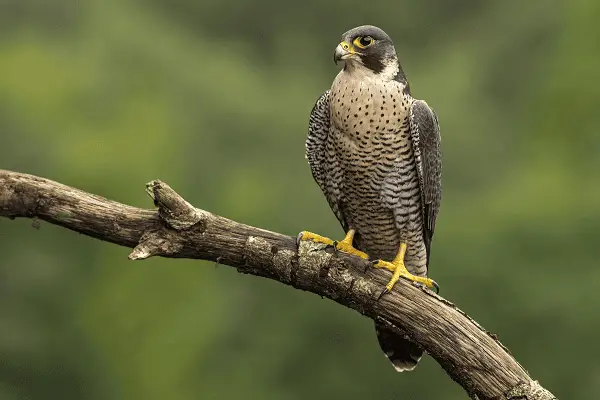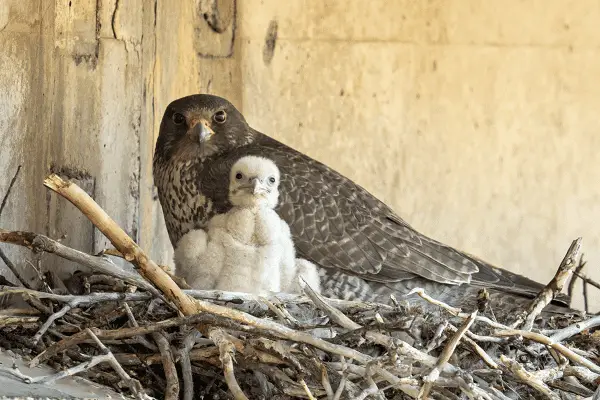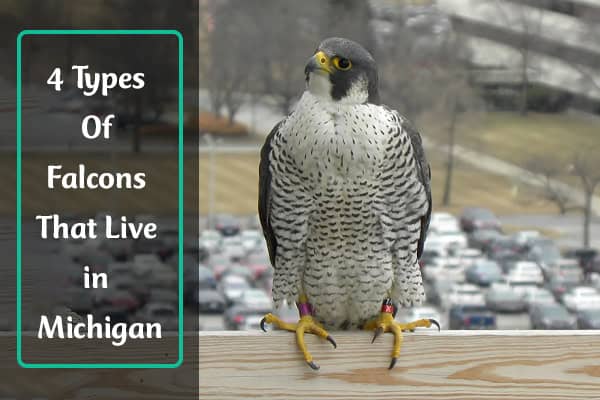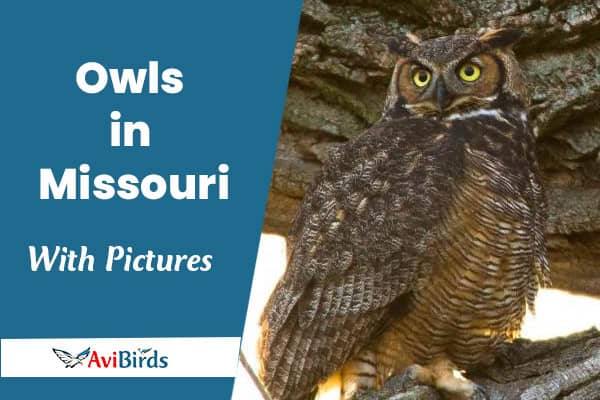4 Types Of Falcons That Live in Michigan! (With Pictures)
Do you love watching birds of prey? Michigan has an amazing variety of falcons. Each kind is special in its own way. They include the fast Peregrine Falcon and the tiny American Kestrel. In this piece, we explore these falcons in the Great Lakes State, with images to help you learn.
Get ready to learn about the main falcon types in Michigan. You’ll hear about the big Gyrfalcon and the quick Merlin. Each bird is important for Michigan’s wildlife. Let’s begin our journey into the world of Michigan’s flying hunters!
Overview of Falcon Species in Michigan
Michigan’s regular falcons are the Peregrine Falcon, American Kestrel, and Merlin. Sometimes the Gyrfalcon and Prairie Falcon drop by. But, these visits are not common.
Each falcon kind has its looks and ways, which draw bird watchers’ attention. Now, let’s explore more about these birds and how they fit into Michigan’s nature.
| Falcon Species | Status in Michigan | Key Characteristics |
|---|---|---|
| Peregrine Falcon | Annual | Fastest bird on Earth, with a diving speed of over 200 mph |
| American Kestrel | Annual | Smallest falcon in North America, known for its distinctive plumage |
| Merlin | Annual | Fierce avian hunter, capable of taking down prey larger than itself |
| Gyrfalcon | Rare visitor | Largest falcon in the world, native to the Arctic regions |
| Prairie Falcon | Rare visitor | Found primarily in the western United States and Canada |
1. Peregrine Falcon
- Scientific name: Falco peregrinus
- Life span: 8-15 years
- Size: 14-19 inches
- Weight: 1.1-3.3 pounds
- Wingspan: 3-4 feet
- Status: Least Concern
The peregrine falcon is a majestic bird known for its speed and hunting skills. It’s found nearly everywhere except Antarctica. This makes it one of the most widespread bird kinds.

Nesting Habits and Breeding
Peregrine falcons often stay with one mate for their lives, starting their mating dances in April. They typically have three to five chicks. They’ve learned to nest in cities, choosing spots like water towers and light towers. These birds face dangers early in their lives but can live for more than a decade.
Hunting Strategies and Diet
Peregrine falcons eat a wide range of foods, with up to 450 different species in their diet. They’re famous for their high-speed dives to catch prey, sometimes reaching 240 miles per hour. Their hunting combines speed and sharp eyesight for efficient strikes.
Conservation Efforts and Recovery
In the 1960s, peregrine falcons in the U.S. dropped to only 10% of their original number and were put on the endangered species list. Legal actions and building nesting spots in cities have helped their numbers grow. Now, Michigan has about 35 nests. The peregrine falcon has made such a good recovery that it’s no longer endangered, but the species still needs protection.
2. American Kestrel
- Scientific name: Falco sparverius
- Life span: 5-10 years
- Size: 8-12 inches
- Weight: 2.8-5.8 ounces
- Wingspan: 20-24 inches
- Status: Least Concern
The American Kestrel is Michigan’s tiny standout in the falcon world. This small yet bold bird is amazing to see. With its colorful look and great hunting skills, it’s truly a nature wonder.

Courtship and Nesting Behavior
Watching American Kestrels in Love is amazing. These birds do fancy flying to choose their partners. The male shows off his flying skills. If they pick each other, kestrels return to the same home. They like to nest in old woodpecker holes or natural spots and lay about 4 to 5 eggs.
Diet and Hunting Techniques
The American Kestrel is a smart hunter. It catches prey in different ways, like hovering or diving quickly. Its meals include small animals, insects, bats, snakes, and little birds. Kestrels even hide extra food for later, showing their cleverness.
In Michigan, American Kestrels offer joy to bird lovers and help with the economy. Putting up nest boxes near fruit orchards is a win-win. It saves a lot of cherries, from $84 to $357, for every dollar spent. This smart pest control shows how important kestrels are for Michigan’s natural balance.
3. Merlin
- Scientific name: Falco columbarius
- Life span: 5-10 years
- Size: 9-11 inches
- Weight: 5-7 ounces
- Wingspan: 20-26 inches
- Status: Least Concern
The Merlin is a small yet fierce bird of prey found in Michigan. It flies with unmatched grace and has strong hunting skills. This falcon lives across the northern hemisphere in various places like forests and grasslands.

Identification and Range
Merlins are different from larger birds of prey. They are smaller but stronger than the slender American Kestrel. Males are usually gray, while females and young birds are brown. Merlins in North America have unique colors based on their location.
Breeding and Nesting
After the DDT pesticide ban, Merlin populations have grown. They pair up for breeding and show off in the sky together. These birds lay three to six eggs each season. Most offspring make it to adulthood.
Prey and Foraging Habits
Merlins hunt with intense speed and energy, seeking other birds mainly. They catch their prey in the air or just above ground. Sometimes they hunt dragonflies. They are skilled hunters, doing well in their endeavors.
Merlins also fiercely attack bigger birds like eagles. During their travels, they avoid dense forests and dry places without trees. In Europe, Merlins sometimes share their winter homes with hen harriers, but not in North America.
“The oldest known Merlin was a male, at least 11 years and 11 months old, banded in New York in 1982 and recovered in New Brunswick, Canada in 1993.”
Merlins are crucial for the ecosystem in Michigan by controlling other bird populations. They are a great topic for those in love with nature and birdwatching, with their prowess and stunning ways.
Check Our Previous Articles:
4. Gyrfalcon
- Scientific name: Falco rusticolus
- Life span: 15-20 years
- Size: 20-25 inches
- Weight: 2-4 pounds
- Wingspan: 3-4 feet
- Status: Least Concern
The Gyrfalcon is the biggest falcon and lives in the icy north all year. It nests and hunts in North America and Eurasia’s high places. Despite its usual cold home, in the winter, these birds can make their way to Michigan. Their large size and unique colors make them easy to spot if you’re lucky.

Falcon Conservation and Watching in Michigan
Falcons, known for their grace, have faced tough times in Michigan. Pesticides and lost habitats brought down their numbers. But, with focused efforts, these birds have made a strong comeback. Now, anyone can see falcons flying high over Michigan.
The peregrine falcon’s story is especially amazing. It was almost gone in Michigan. But, with help from people, it’s back. You can see them nesting on tall buildings and bridges. A special spot in Lansing has seen over 80 eggs since 2004.
Michigan is also home to the American kestrel and the merlin. Thanks to the Michigan Hawking Club, these birds are thriving. Falcon watching here is exciting for everyone. It’s a chance to see these powerful raptors in action.
Wrapping Up!!!
Falcons in Michigan are amazing birds known for their strength, speed, and agility. Because of these traits, they are excellent hunters and fun to watch for both experienced and new birdwatchers.
For example, in Michigan, you can see different types of falcons. The majestic Peregrine Falcon and the rare Gyrfalcon are some of the falcons you might spot. Bird enthusiasts can enjoy observing and appreciating these fascinating birds.







